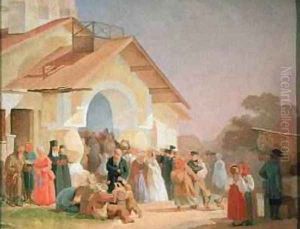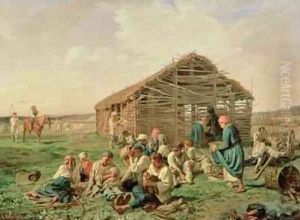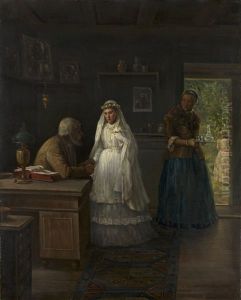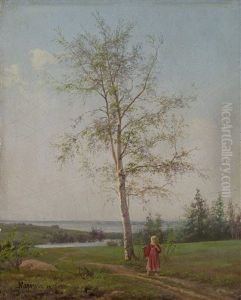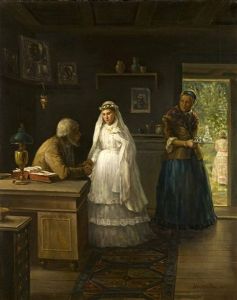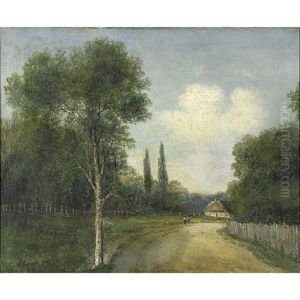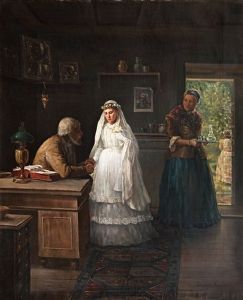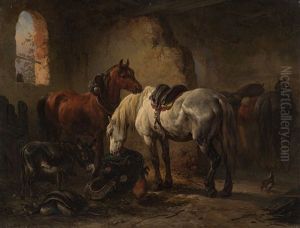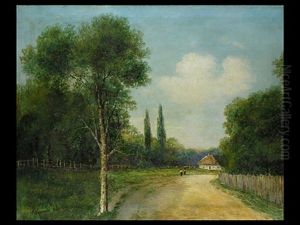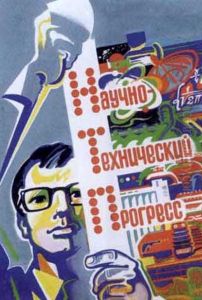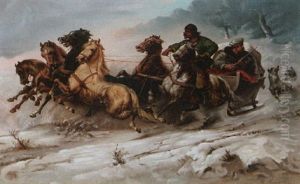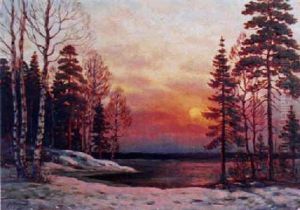Aleksandr Ivanovich Morozov Paintings
Aleksandr Ivanovich Morozov was a notable Soviet painter and graphic artist whose work was primarily rooted in Socialist Realism, the official art movement of the Soviet Union from the early 1930s onwards. Born on August 29, 1901, in the city of Nizhny Novgorod, Russia, Morozov was active during a period of great political upheaval and cultural transformation.
Morozov's early life and artistic education were influenced by the Russian Revolution and the subsequent establishment of the Soviet Union. He studied at the Nizhny Novgorod Art School before moving on to the Moscow State Art Institute named after V.I. Surikov, which was a leading institution for art education in the Soviet Union. During his studies, Morozov was exposed to a variety of artistic techniques and philosophies, which he would later incorporate into his own style.
After completing his education, Morozov worked on a variety of projects that were aligned with the Soviet government's agenda. His art often depicted industrial scenes, workers, and collective farm labor, all of which were central themes in the Socialist Realist aesthetic. This movement aimed to glorify the achievements of the working class and the Communist Party. Morozov's work, like that of many of his contemporaries, was used as a tool for propaganda, aiming to inspire and mobilize the masses towards the communist cause.
Throughout his career, Morozov received several accolades and was recognized by the state for his contributions to art and culture. He participated in many exhibitions, both domestically and internationally, showcasing the Soviet Union's artistic achievements. His artwork not only served as a reflection of the times in which he lived but also contributed to the shaping of Soviet visual culture.
Morozov's legacy lives on through his contributions to the Socialist Realist movement and his impact on the generations of artists that followed. He passed away on November 6, 1973, but his works remain on display in many museums across Russia and in former Soviet territories, preserving the historical context of the era in which he created his most enduring art.
